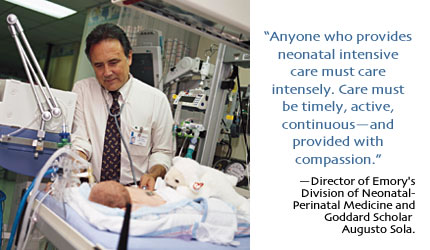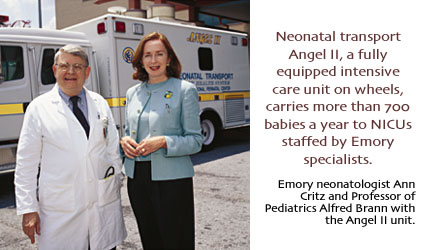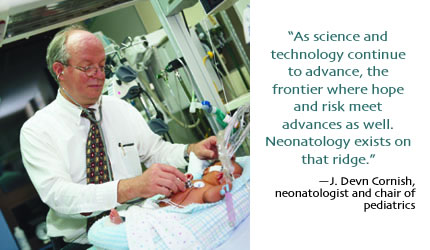|
 ELEVEN-YEAR-OLD
Nancy Jean Howe
is playing hoops in her Sandy Springs driveway, swishing a few
baskets while waiting to go to soccer practice. She’s a
natural, moving with an effortless grace not often seen in lanky
fifth-graders. ELEVEN-YEAR-OLD
Nancy Jean Howe
is playing hoops in her Sandy Springs driveway, swishing a few
baskets while waiting to go to soccer practice. She’s a
natural, moving with an effortless grace not often seen in lanky
fifth-graders.
Whether
playing second base on a boys’ baseball team or winning
a race at school, Nancy (left) thrives on the competition. “I
just feel confident in myself that I can do it,” says the
freckled, fair-haired athlete, who has a shelf full of sports
trophies in her bedroom. Her prize possession is a baseball
with a date inscribed on it: May 20, 2000.
“That
was the game,” she recounts proudly, “where I did
some really good fielding on a grounder and threw it to first
base and the coach said, ‘Now that’s how to play baseball!’
’’
Nancy,
who was born without a full diaphragm and almost no left lung,
has far surpassed anything doctors at Egleston Children’s
Hospital/Children’s Health Care of Atlanta thought she
could achieve. “They told us she would never play sports
or be an opera singer,” says Jean Hetzel, Nancy’s
mother. “In fact, when we first brought her home when she
was two months old, we weren’t even supposed to let her
cry.”
If
Nancy had been born just a few years earlier, she almost surely
would have died. But because of rapid advances in neonatology,
babies born prematurely or with severe medical problems have
a good shot at not only surviving, but thriving. “We’re
just happy to be able to treat her normally,” says her
father, Jeff Howe.
Nancy’s
good health is the result of a series of high-tech medical interventions.
She lifts up her T-shirt to show off the six-inch, pale white
scar stitched across her left ribcage up to her breastbone,
a reminder of life-saving surgery when she was two days old.
Born
at Northside Hospital in Atlanta on June 11, 1991, Nancy is
the second daughter of Hetzel, a kindergarten assistant at Highpoint
Elementary, and Howe, a chef at The Weather Channel. Hetzel’s
pregnancy had been routine, and the baby was full-term—seven
pounds, with a full head of brown hair. But just seconds after
delivery, when her lungs were supposed to take over supplying
oxygen for her body, Nancy turned blue and didn’t cry.
“Everyone
was really quiet. Then the room filled up with the people you
don’t want in the delivery room with you,” Hetzel
remembers, “and they took her from us.”
Nancy
had a diaphragmatic hernia, which occurs in about 1 in 3,000
live births; her intestines had pushed up into her chest where
her left lung should have developed.
She
was taken to Northside’s NICU and hooked up to a ventilator.
After X-rays showed a left lung the size of a thumbnail, she
was taken by neonatal transport—Emory’s Angel II —to
Egleston Children’s Hospital on Clifton Road, where Emory
neonatologist J. Devn Cornish took charge of her care. Within
twenty-four hours, she had had two surgeries. Doctors immediately
fashioned an expandable Gore-Tex patch and attached it to her
ribs to act as an artificial diaphragm, and she was placed on
extra corporeal membrane oxygenation (ECMO,) an innovative procedure
Egleston had begun performing just the year before. Tubes ran
from a vein in Nancy’s neck to the cylindrical device—a
scaled-down version of a heart-lung machine—that put oxygen
into her blood. She stayed on ECMO for thirteen days, with the
hope that her existing lungs would expand and heal enough to
take over the job.

“It
all happens so fast, your brain doesn’t have time to register
all the possible complications,” Hetzel says. “We did
know she had less than a 10 percent chance of living. We couldn’t
even hold her. All we could do was touch the top of her head.”
ECMO
is a very high-risk, invasive procedure, says Cornish, who came
to Emory in 1990 to establish Egleston’s ECMO program after
starting similar programs in San Antonio and San Diego. “It’s
clearly a treatment of last resort,” he says. “But
there are circumstances where the potential benefits far outweigh
the risks, and this was the case with Nancy.”
Nancy
was the third of three babies with diaphragmatic hernias treated
with ECMO at Egleston and the first to survive. She was weaned
off the ventilator—a landmark for NICU babies—around
the Fourth of July and went home in mid-August.
Hetzel
flips through a photo album filled with Polaroids from Nancy’s
two months in the unit: it begins with a sedated baby attached
to a tangle of tubes and ends with a plump, smiling toddler
playing with her four-year-old sister, Abby.
Egleston’s
“New Beginnings” calendar for 1993 featured a round-eyed,
eighteen-month-old Nancy on the cover, and the hospital’s
1995 holiday cards had four-year-old Nancy’s green handprint
fashioned into wreaths on the front. She had become a living
symbol of what high-level NICUs can offer critically ill babies:
a future.
The
NICU at Egleston Children’s Hospital, on Emory’s main
campus, is one of three in the Atlanta area staffed by Emory’s
sixteen neonatologists: two level III units, at Crawford Long
Hospital in midtown and Grady Memorial Hospital in downtown,
and a level IV unit—the highest level of neonatal care
available—at Egleston.
Egleston
specializes in the toughest neonatal cases in the region: infants
who need state-of-the-art surgery or the most complicated treatments.
Eleven babies can be cared for in the intensive care unit (up
to three on ECMO,) and ten more in the intermediate care unit.
On any given day, the staff could be dealing with brain hemorrhages,
undeveloped lungs, severe infections, or cardiac problems.
“Egleston
offers everything a baby could require,” says Augusto Sola,
director of Emory’s Division of Neonatal-Perinatal Medicine
and a Goddard Scholar, who came to Emory last year from Cedars-Sinai
Medical Center in Los Angeles. “Truly, the babies we care
for at Emory have good outcomes. But Georgia is still fourth
from the bottom nationally in terms of infant mortality, so
we have a long way to go in improving education, prenatal care,
outreach, and access to care. If these little babies and their
mothers could make a demonstration, and hold protests with signs,
they might get the funding and attention they deserve.”
NEONATOLOGY
IS A FAIRLY MODERN SCIENCE
which, for centuries, was deemed unnecessary: frail, sickly
babies were “meant” to die, just as the fit and strong
should survive, so that society would not be burdened by the
lame or the constitutionally weak.
Even
after a human incubator was invented in the late 1880s in France,
premature infants were seen as little more than curiosities.
Sideshows at international expositions and fairs began featuring
“child hatcheries,” which attracted long lines of
visitors willing to pay to see tiny babies in incubators complete
with air filtration, humidifiers, and monitors. To everyone’s
surprise, the babies survived, and hospitals around the world
began using these devices.
During
the 1950s, heated Isolettes, made of clear Plexiglas, replaced
heavy wooden and metal incubators, and in the 1960s, ventilators
were used to pump oxygen-enriched air directly into premature
infants’ lungs, which became the standard treatment for
respiratory distress.
The
need for better treatments for premature infants received national
attention and increased research funding in 1963, after President
John F. Kennedy’s third child, Patrick, was born six weeks
early and died of respiratory distress syndrome.
Neonatology
is now one of sixteen subspecialties in pediatrics, requiring
three years of additional study after becoming a pediatrician.
It’s a demanding specialty, both in skills and stamina—high-risk
births and crises in newborns seldom occur during normal business
hours. For Emory’s neonatologists, this means rotating
shifts and occasional weekend and night duty, in addition to
training residents and fellows, giving lectures, and doing research.
Cornish,
now chair of pediatrics at Emory, still works a neonatology
on-call shift once a month. “The last weekend I was on,
I started at 7:15 Saturday morning and got home at 7 o’clock
Monday night, with a few hours of sleep on the floor of my office
at Grady,” he says. “That’s what neonatology
is often like—pretty grueling.”
Still,
there are considerable rewards: the fast pace, the intellectual
challenge, the immediacy of critical care, and the patients
who come back to visit, a little taller each year

AS
AN URBAN, PUBLIC HOSPITAL,
Grady Memorial’s main mission is to provide health care to
Atlanta’s poor—it is obligated to accept any patient.
About half of Grady’s patients are covered by Medicare or
Medicaid.
Grady
is also a teaching hospital, with what the Atlanta Journal-Constitution’s
Cynthia Tucker calls a “hard-working, top-notch staff struggling
to deliver top-quality care under difficult circumstances.”
On Grady’s fifth floor is the first, and still one of the
largest, special-care nurseries in Atlanta, with forty intensive
care beds and thirty-eight intermediate care beds.
The
hospital’s maternal-fetal medicine section receives high-risk
transfers from other obstetricians in the state, and the hospital
also sees a large number of disadvantaged women, addicts, or
immigrants who received little or no prenatal care. This results
in a higher than average number of premature, low-birth-weight
infants: About 15 percent (twice the state average) of the 4,500
infants born annually at Grady are younger than thirty-seven
weeks gestation or weigh less than 2,500 grams (five pounds,
eight ounces.)
“Grady
sees a very diverse patient population and a high-risk maternal
group,” says Susie Buchter, medical director of Grady’s
NICU, who joined the Emory faculty in 1984 after finishing her
fellowship in neonatology here. “But every child is given
the care they need.”
This
afternoon, there are twenty-three babies in the dimly lit NICU,
lined up against the wall in aquarium-sized, Plexiglass incubators
and surrounded by a battery of heart monitors, ventilators,
heaters, and humidifiers. Long strands of plastic tubing seem
to tether these fragile, naked infants to the physical world—almost
all premature babies younger than thirty-two weeks must be intubated
and placed on ventilators, since their lungs are not yet fully
developed, and many have IVs or feeding tubes, since they’re
too small or ill to nurse or take a bottle.
Highly
skilled neonatal nurse practitioners and bedside nurses (who
take care of three to four infants at most) are with the babies
around the clock, while scores of doctors, respiratory therapists,
nutritionists, and other specialists circulate through the NICU,
doing rounds, checking vitals, responding to alarms, updating
charts, consulting with small clusters of anxious parents and
grandparents.
“The
babies require ongoing, daily assessment,” says Ira Adams-Chapman,
the Emory neonatologist working at Grady this afternoon. She
monitors the machines, but also relies on hands-on exams to
check for heart problems, apnea (premies have a tendency to
“forget” to breathe), or distended abdomens. “Things
constantly come up with these kids—infections or complications—you
can never really trust them.”
A
calm, quiet efficiency emanates from Adams-Chapman, who came
to Emory in 1998 from a fellowship in San Diego. She was drawn
to neonatology for its “critical care aspect, but also,
because most of our kids are able to go home. And the babies
are here for a while, so we get to know them and their families
and establish relationships.

Ideally,
neonatologists become involved with the family before the baby
arrives. By using prior birth histories, ultrasounds, amniocentesis,
and other prenatal diagnostic tests, many high-risk births can
be anticipated.
This
was the situation with Aicha Keita, originally from Mali, West
Africa, who had seven previous miscarriages and one living child.
Doctors at Grady decided to give Aicha steroid shots during
her most recent pregnancy to strengthen the baby’s lungs
in utero. At twenty-seven weeks, Keita developed pre-eclampsia
(a condition involving high blood pressure), which forced a
Caesarean section. Abdelkader “Kader” Keita, three
months early and weighing one pound, four ounces, was whisked
away to the NICU, where he was placed on a ventilator.
Premies
have two ages: one based on the day they were actually born,
the other on the date they would have been born if they had
been full-term. Often, they will be released from the NICU near
their due date, and their development follows that of a baby
born on that date.
Kader
was born January 5, 2001, three months earlier than his original
due date of April 8. He went home from the NICU in May and is
now sixteen months old, but is developmentally on target for
his “adjusted age” of thirteen months: he’s cut
three teeth, babbles, and pulls himself up to stand.
“His
five-year-old sister has really helped to propel him on,”
says Kader’s home health care nurse, Janet Alston. “It
makes a big difference when there’s support in the home
from the family. I can say that from experience, because I work
with babies who don’t have that network of support and
it takes them longer.”
Kader
also receives periodic assessments at Emory’s Developmental
Progress Clinic, where evaluations are performed on babies who
have “graduated” from the NICUs to help doctors and
families gauge their therapeutic needs.
CREATING
THE OPTIMAL ENVIRONMENT
for the long-term health of premature infants is a priority
at Crawford Long Hospital’s NICU, which moved into new
quarters this summer, becoming part of a comprehensive birthing
center on the third floor of the recently completed Crawford
Long medical complex, across from the original hospital on Peachtree
Street.
The
unit, which has eight intensive care beds and sixteen intermediate
care beds, serves as a developmental lab where the latest research
is applied. Dim lights, muted sound, touch times (to ensure
the baby is not overstimulated,) and covered incubators all
play a role. But “teaching the mother how to relate to
her baby, to read its cues, to help the baby soothe and support
itself, this is the most important factor for the long-haul,”
says Ann Critz, an Emory neonatologist for twenty-two years
who developed the special care nurseries at Crawford Long.
The
tiniest babies cared for at Grady and Crawford Long are “micropremies,”
who weigh less than 1,500 grams (three pounds, five ounces)
and are between twenty-three and twenty-five weeks’ gestation.
Babies this young exist at the lowest limits of medicine’s
ability to save premature infants; just fifteen years ago, twenty-four-week-old
fetuses were considered miscarriages and no attempts were made
to save them.
By
all rights, micropremies should still be floating in the dark
confines of the womb. Their nervous systems are hypersensitive
and easily overwhelmed. Because their bodies do not have much
fat under the skin, they are unable to control their own temperatures
and become easily dehydrated. Their organs are fully formed,
but not necessarily functional. The blood vessels in their brain
are fragile and sometimes burst, requiring surgery, and the
mechanism that allows them to suck and swallow and breathe without
choking is not yet in place. Of the micropremies who do survive,
about half will have vision problems, many will have developmental
delays, and some face cerebral palsy and lung disease. For the
smallest and sickest of these babies, the decision must sometimes
be made to let them die, instead of continuing high-tech efforts
to prolong their lives

“There
are babies who are so very premature, it’s difficult to support
treatment. They are unlikely to survive and, if they do, they
have a high rate of serious complications,” says Cornish.
“We feel morally obligated to do everything that should be
done, but not necessarily everything that could be done.”
Cornish,
who received his medical degree from Johns Hopkins and did his
residency at Harvard, understands how emotional this decision
is for the parents: He has six children of his own, two of whom
spent time in NICUs, including his youngest, who has Down syndrome
and required open heart surgery as a baby. “When I talk
to the family of a high-risk baby, I tell them I’ve sat
on the other end of the discussion, and that I will include
them in every decision we make,” says Cornish.
If
families and doctors can’t agree on whether care should
be continued or withdrawn, a bioethics committee is consulted.
The committee, which includes doctors, nurses, hospital administrators,
social workers, and chaplains, makes a recommendation based
on what’s in the best interest of the child.
THE
EMPHASIS IN NEONATOLOGY
has switched from keeping ever younger, smaller neonates alive
to giving premature babies who do survive the best shot at healthy,
vital lives. “We seem to be butting up against the lower
limits,” Buchter says. “Now, we’re focusing on
better outcomes—nutrition, brain growth, lack of complications.
That’s the next major thrust.”
Emory
also has been involved in cutting-edge research, such as the
earliest clinical trials in the 1980s of different forms of
surfactant, a milky liquid that serves as a natural lubricant
in the lung. When surfactant, which is produced naturally in
full-term babies, is dripped into premature infants’ breathing
tubes, it helps to keep the air sacs of the lungs inflated.
“We
found that babies who had surfactant had higher survival rates,
a much shorter stay, decreased lung disease, and weren’t
on ventilators as long,” says Aimee Poor, Emory’s
neonatal nurse practitioner coordinator.
The
use of surfactant has cut deaths from respiratory distress syndrome
in half since 1990, the year it was approved by the Food and
Drug Administration. “The morbidity of being a pre-term
baby has really changed,” says Buchter, who did her own
neonatal residency in the mid-1980s when premature infants’
lungs frequently collapsed. “My residents today, very few
of them learn how to put a chest tube in, whereas it’s
something I did every night on call.”
Another
life-saving advance has been finding the right mixture of protein
and fats to feed premature infants through their IVs, which
is deposited directly into the baby’s bloodstream through
intravenous catheters the size of fishing line threaded into
arteries that aren’t much larger. Monitoring what goes
in—and what comes out—is crucial.
“You
have a patient who can’t talk to you or follow commands,”
Buchter says. “To me, the art comes in being able to sense
what’s going on through subtle changes. The more meticulous
you are with their care, the better. You have to calculate every
milligram of glucose given, every drop of urine produced. A
teaspoon of fluid is a huge amount to a one to two pound baby.”
In
the microcosm of gestation, something magical seems to occur
around the six-month threshold: Of infants born at twenty-three
weeks, 90 percent will die; of those born at twenty-six weeks,
90 percent will live.
At
this point, every ounce and every day can make a difference.
Pamela Brooks knows this first-hand: she spent the last two
days of her first pregnancy in the spring of 1993 upside down
in a hospital bed at Crawford Long, trying to keep her baby
inside for every additional hour possible.
“I
looked like a science experiment,” says Pam, who had already
taken steroid shots to help develop the baby’s lungs in
utero. “I was in total crisis mode when most women are
having their baby showers.”
Pam,
assistant director of corporate relations in institutional advancement
at Emory, and her husband, Richard, a real estate investor who
graduated from Emory College in 1989, knew her pregnancy was
high risk, since Pam had been diagnosed with fibroid tumors.
But they weren’t prepared for how tiny one-pound, eight-ounce
Kelsi Briana would be, born a full three months before Pam’s
due date.
“The
first time I saw her, she was an hour old in the incubator.
Her cry sounded like a kitten. With her legs curled up, she
was the length of my hand. It was such a shock, it all had a
surreal feeling,” Richard says. “But at my first word,
her eyes popped open. She knew her daddy.”
Kelsi’s
baby book opens with a photo of her hooked up to a ventilator,
above the handwritten caption: “I’m small but mighty.”
After three months in the Crawford Long NICU, under the care
of Ann Critz, she went home on her father’s birthday, Aug.
6.
Now
nine and in perfect health, Kelsi will enter fourth grade at
St. Thomas More in Decatur in the fall. She enjoys tennis, just
played a successful duet of “This Old Man” with her
mom at a piano recital, and loves math and science.
The
Brooks’s second child, Kayla, now seven, was also premature,
born one month early and weighing four pounds, four ounces.
She stayed in Crawford Long’s NICU for a month. “We
were eager to take her home,” Pam says. “She was bigger
than we were used to.”
Kelsi
and Kayla are looking forward to bike-riding and hula-hooping
over summer vacation at their Stone Mountain home. “I can’t
do the hula-hoop around my waist, but I can spin it on my arms,”
Kelsi says, demonstrating in her driveway.
And
as the hoops spin and her smile widens, the mighty Kelsi demonstrates
the full joy and wonder that can be hidden in an ordinary summer
afternoon.
|